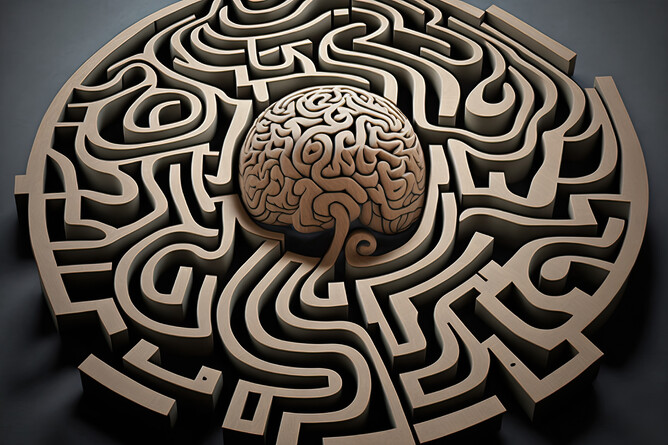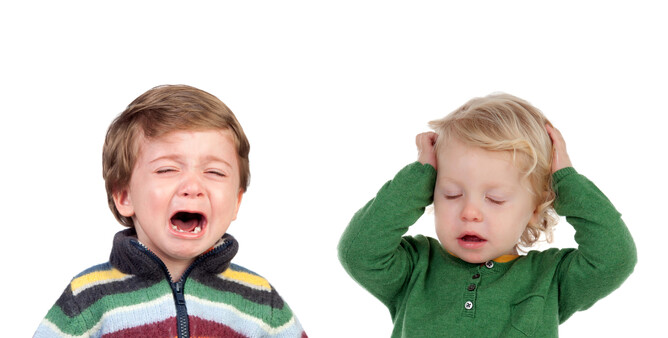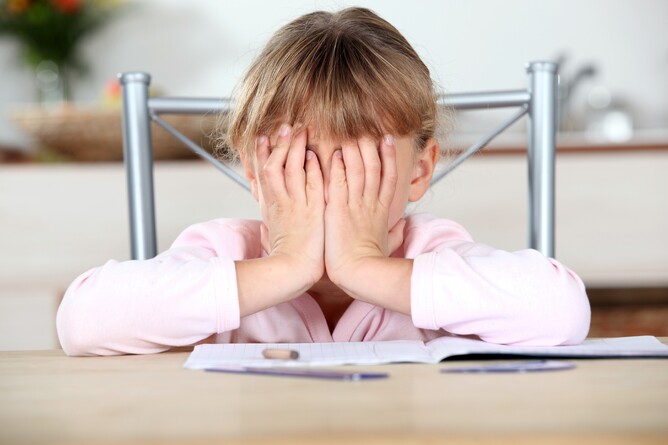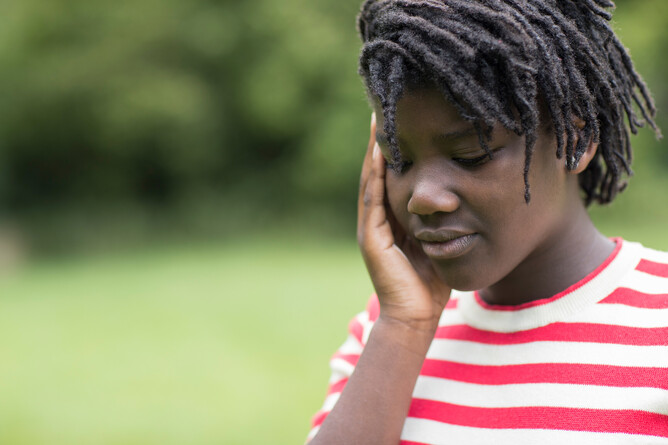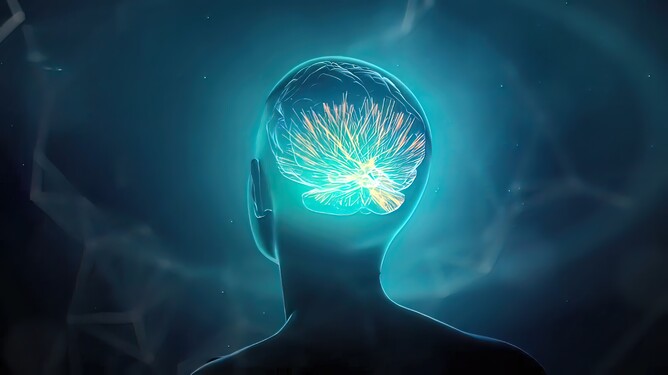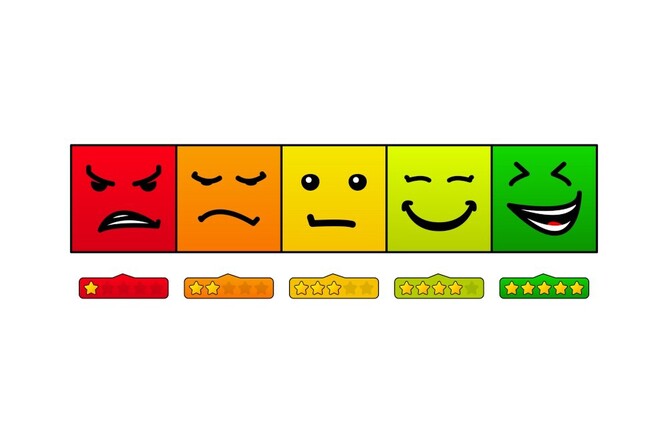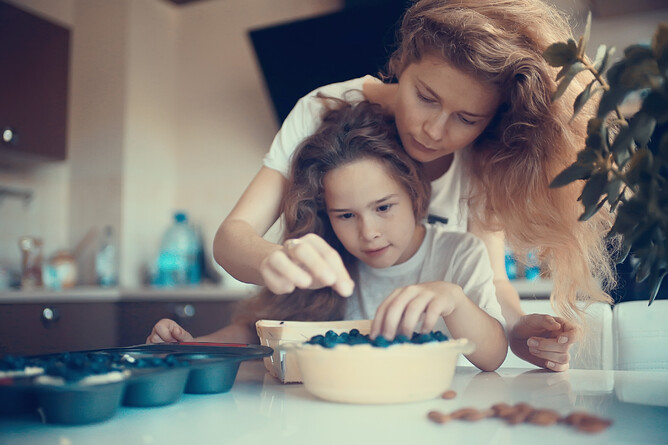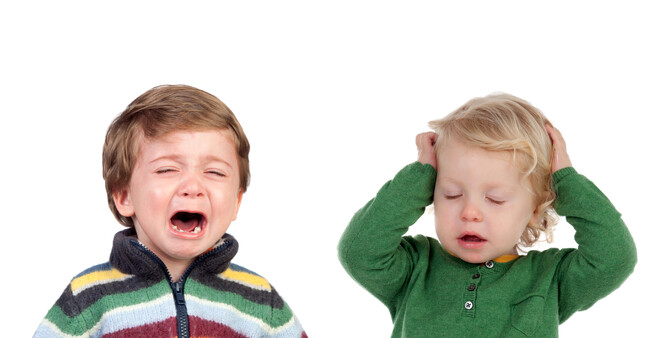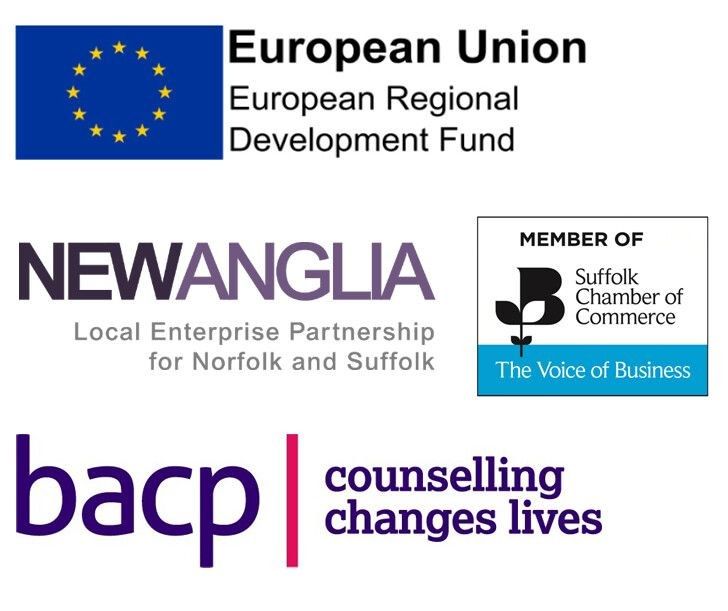Decoding the Essence of Anxiety
Anxiety, a common human emotion, is our body's response to uncertainty, change, or potential threats. It can range from mild unease to overwhelming distress. In this guide tailored for parents, caregivers, and professionals working with children and adolescents, we delve into the multifaceted world of childhood anxiety. By unravelling its complexities, we aim to empower you to provide effective support and guidance to the young minds you care for.
Unveiling the Faces of Anxiety
Anxiety wears different masks, often camouflaging itself as various emotions or behaviours. It might be restlessness, irritability, difficulty concentrating, reluctant to leave a safe environment to them or even physical symptoms like headaches and stomach aches. As children transition through the years, understanding these expressions can be pivotal in recognising when anxiety might be at play.
Understanding Anxiety in Infants and Juniors: Signs and Manifestations
Anxiety is not limited to adults, even infants and juniors can experience it. However, their expressions of anxiety might be less verbal and more behavioural. Here's how anxiety can manifest in these age groups:
Infants (0-2 years)
1. Separation Anxiety: Infants can display distress when separated from their primary caregiver, often seen as crying, clinging, or becoming inconsolable when someone they're attached to leaves.
2. Avoidance: Infants might start avoiding unfamiliar people or situations by turning away, burying their face, or crying.
3. Sleep Disturbances: Anxiety can disrupt sleep patterns, causing frequent night waking, difficulty falling asleep, or irregular sleep schedules.
4. Excessive Crying: Infants experiencing anxiety might cry more frequently, seemingly without a clear reason.
5. Physical Symptoms: Clenched fists, rapid breathing, tense muscles, or changes in appetite might indicate heightened stress levels.
Juniors (3-10 years)
1. Fears and Phobias: Children in this age group might develop specific fears or phobias, such as fear of the dark, animals, or being separated from parents.
2. School Refusal: Anxiety can lead to refusal to attend school, often accompanied by physical complaints like stomach-aches or headaches.
3. Regression: Stress can cause regression in behaviours, such as bedwetting, thumb-sucking, or baby talk, which the child had previously outgrown.
4. Perfectionism: Some children might exhibit perfectionist tendencies, striving for perfection in tasks and becoming anxious about making mistakes.
5. Social Anxiety: Fear of social interactions can emerge, leading to avoidance of unfamiliar peers or reluctance to participate in group activities.
6. Physical Symptoms: Children may complain of stomach-aches, headaches, or other physical discomforts in response to anxious feelings.
7. Irritability and Restlessness: Anxious juniors might become more irritable, easily frustrated, and restless.
8. Excessive Worrying: Repetitive worrying about future events, school, friendships, or other aspects of life can be a sign of anxiety.
It's important to remember that anxiety can vary greatly among individuals, even within the same age group. Children might not always have the vocabulary to express their anxiety verbally, so observing their behaviours and any changes in their usual patterns is key to identifying potential anxiety. When in doubt, seeking guidance from paediatricians, mental health professionals, school, counsellors and therapists can provide valuable insights and support in understanding and managing anxiety in infants and juniors.
Unveiling Anxiety in Adolescents: Recognising the Signs
Adolescence is a period of intense change and self-discovery, often accompanied by the emergence of various emotional challenges, including anxiety. Anxiety in adolescents can manifest in diverse ways, affecting their emotions, behaviours, and overall well-being. Here's how anxiety can look like in adolescents:
1. Excessive Worrying: Adolescents with anxiety may experience persistent and excessive worrying about everyday situations, future events, academic performance, or relationships. This worry can become all-consuming and impact their ability to focus on other aspects of life.
2. Social Withdrawal: Teens with anxiety might avoid social interactions or situations where they feel exposed to judgment or scrutiny. This can lead to isolation, reduced participation in group activities, and a general sense of loneliness.
3. Irritability and Mood Changes: Anxiety can lead to heightened irritability, mood swings, and emotional sensitivity. Teens may react strongly to minor stressors and struggle to regulate their emotions.
4. Perfectionism: Adolescents with anxiety may set unrealistically high standards for themselves, striving for perfection in academics, sports, or other areas. The fear of not meeting these standards can lead to immense stress and anxiety.
5. Academic Pressure: Anxiety can intensify academic stress, leading to excessive worry about grades, tests, and assignments. This can impact their motivation, concentration, and overall academic performance.
6. Physical Symptoms: Physical manifestations of anxiety can include headaches, stomach-aches, muscle tension, and restlessness. These symptoms may not have an underlying medical cause but are linked to anxious feelings.
7. Sleep Disturbances: Adolescents with anxiety might experience difficulty falling asleep, staying asleep, or having restful sleep due to racing thoughts and worry.
8. Avoidance Behaviour: Similar to younger age groups, avoidance behaviours can manifest. Teens may avoid situations, places, or activities that trigger their anxiety, potentially hindering their personal growth and development.
9. Excessive Self-Criticism: Adolescents with anxiety might be highly self-critical and struggle with self-esteem issues. They may focus on their perceived flaws and mistakes, further fuelling their anxiety.
10. Substance Use: Some adolescents turn to substances like alcohol or drugs as a way to cope with their anxiety. Unfortunately, this act of self-soothing often resorts in worsening anxiety, and to many seen more like self-harm forgetting it’s a coping/defence mechanism.
11. Overthinking: Adolescents with anxiety might overanalyse situations, conversations, or potential outcomes, often assuming the worst-case scenario.
12. Physical Restlessness: Restlessness, fidgeting, and an inability to sit still can be physical manifestations of anxiety in teenagers.
It's important to note that not all adolescents will exhibit the same signs of anxiety, and symptoms can vary widely. Adolescents might not always readily share their feelings, so observing their behaviours and engaging in open conversations is crucial. If you suspect that an adolescent is struggling with anxiety, offering support, seeking guidance from mental health professionals, and fostering an environment of understanding can go a long way in helping them navigate their challenges.
The Brain's Reaction to Anxiety
Sometimes, when there’s some science shared it can help understand something better. The brain's reaction to anxiety in children and teenagers involves intricate interplay between various regions and neural pathways in the Brain. Understanding this process can shed light on the physiological basis of anxiety and its impact on young minds. Here's an overview of how the brain responds and functions in the face of anxiety:
· Amygdala Activation: The amygdala, a small almond-shaped structure in the brain's temporal lobe, serves as the emotional processing centre. When a potential threat or stressor is perceived, the amygdala quickly activates, triggering the brain's "fight or flight" response. This rapid activation can be particularly sensitive in children and teenagers, leading to intense emotional reactions.
The amygdala communicates with the hypothalamus, a brain region responsible for regulating the body's stress response. The hypothalamus activates the sympathetic nervous system, which in turn releases stress hormones like adrenaline and cortisol.
· Physiological Changes: As stress hormones flood the bloodstream, several physiological changes occur. Heart rate increases, breathing becomes shallow and rapid, muscles tense, and blood vessels constrict. These changes are designed to prepare the body for immediate action, but in the context of anxiety, they can lead to feelings of restlessness and physical discomfort.
· Regulation, reasoning, and decisions: The prefrontal cortex, the brain's executive control centre, is responsible for decision-making, reasoning, and regulating emotions. Anxiety can hinder its optimal function as it can struggle to manage the amygdala's emotional responses, leading to difficulty in rationalising fears and worries.
They may perceive neutral or low-risk situations as more threatening than they actually are. This cognitive bias contributes to a cycle of anxiety, where the brain interprets various situations as dangerous, further fuelling anxious feelings.
I keep telling them, but they do the same thing!
As children and teenagers navigate anxiety, their brains develop coping mechanisms. Such as those listed like avoidance behaviours, attempting to escape or avoid situations that trigger anxiety. Others might resort to behaviours like seeking reassurance or engaging in rituals to alleviate their anxiety temporarily.
The brain's response to anxiety can create a feedback loop. Chronic anxiety can lead to changes in the brain's structure and connectivity, reinforcing anxious thought patterns and emotional responses. This loop can contribute to the persistence of anxiety over time and the symptoms we witness or experience.
Neuroplasticity and Learning
The adolescent brain is particularly plastic, meaning it is highly adaptable and open to change. This plasticity can work both ways—intense anxiety can reshape neural pathways, making them more prone to anxious responses, while effective coping strategies and interventions can reshape the brain to mitigate anxiety.
How adults support and guide children struggling with anxiety is therefore crucial, and requires patience, understanding and validation before looking further in helping reshape their views and experiences, which can quite literally alter their brain function. Negative feedback, comments or misunderstanding can cause greater harm, and push children of any age into that cycle of anxiety at which levels are not typical for us all to be able to manage.
Understanding the brain's response to anxiety in children and teenagers underscores the importance of early intervention and support. By equipping young individuals with emotional regulation skills, coping strategies, and fostering a supportive environment, we can positively impact the brain's neural pathways and help them navigate anxiety more effectively.
Facilitating Emotional Self-Awareness
Empowering children to understand and express their feelings is a cornerstone of emotional intelligence. Guiding them to identify and verbalise the physical sensations that accompany anxiety—such as a racing heart or a churning stomach—helps bridge the gap between emotions and language. This foundation equips them to communicate their inner world effectively.
How might these conversations look like?
When a child confides about their anxiety, validation and acknowledgment play a vital role. Prioritise empathetic listening over immediate inquiries into the cause. Express understanding and assure them that their feelings are valid. By creating a safe and non-judgmental space, you lay the groundwork for open dialogues about their emotions.
- Reflective Validation: "I'm here for you, even if you're not sure why you're feeling anxious. Your feelings matter."
- Empathy First: "It's okay not to have all the answers right now. Let's focus on helping you feel better."
- Future Exploration: "We can find ways to ease your feelings. We can explore the 'why' whenever you're comfortable."
Some Effective Coping Strategies:
While teaching breathing techniques in moments of heightened anxiety may not always be well-received, discussing these methods and various others during calmer times can be invaluable.
Consider these five techniques:
1. Diaphragmatic Breathing: Deep, deliberate breaths that engage the diaphragm for relaxation.
2. Box Breathing: Inhale for 4 counts, hold for 4, exhale for 4, and pause for 4.
3. Progressive Muscle Relaxation: Sequentially tensing and releasing muscle groups to release tension.
4. Mindful Breathing: Anchoring the mind in the present by focusing on the breath's rhythm.
5. Visualisation: Guided imagery to create a serene mental sanctuary.
Other techniques to help or support your child with their anxiety could also look like;
· Thought Monitoring and Reframing by encouraging the individual to keep a thought journal where they write down their anxious thoughts. This may help them identify and challenge catastrophising, all-or-nothing thinking in those thoughts at better times. Guiding them to reframe anxious thoughts into more realistic and balanced ones. Much like Cognitive Restructuring helping the individual to identify automatic negative thoughts and together challenge them with evidence and logic into more balanced and rational perspectives.
- It’s Self-Monitoring in essence, the idea to encourage keeping track of anxiety levels, triggers, and responses. As Hindsight can also be a helpful thing, for individuals, or when working with professionals.
· Gradual exposure to situations or triggers that cause anxiety, starting with less intense situations and progressing to more challenging ones may help them learn that their anxiety will naturally decrease over time as they remain in the anxiety-provoking situation. It’s important to find a limit they can start with, without any pressure. Don’t force it.
· Behavioural Activation encouraging engaging in activities that bring pleasure and a sense of accomplishment, even if anxiety is present (the earlier you spot the signs, the better). This helps to counteract avoidance behaviour and increase positive emotions.
· Worry Time Technique: Allocate a specific time each day for worrying. Whenever anxious thoughts arise outside of this time, advise the individual to acknowledge them but postpone addressing them until the designated worry time.
· Problem-Solving Skills by teaching the individual structured problem-solving steps to address real-life challenges that contribute to their anxiety. This can empower them to take constructive action and reduce feelings of helplessness.
Each individual's specific needs and circumstances will mean some of these may help, and some of these will not. It's recommended to work with a trained mental health professional, such as a therapist or counsellor, to implement these techniques in a personalised and effective manner.
Normalising Anxiety for Children and Adolescents: A Vital Perspective
Anxiety, often considered a negative emotion, is a natural and essential part of the human experience. It's crucial to help children and adolescents understand that feeling anxious is a common response to life's uncertainties. By normalising anxiety, we empower them to recognise that their emotions are valid and shared by many.
Communicating that everyone, regardless of age, encounters moments of anxiety can remove the stigma and fear surrounding it. It's akin to acknowledging that just as we experience happiness, we also experience moments of worry. By sharing relatable anecdotes and stories, adults can create an environment where young individuals feel comfortable discussing their feelings openly.
Normalising anxiety does not dismiss its challenges but rather emphasises that experiencing it is not a sign of weakness. Instead, it offers an opportunity for growth and learning. By framing anxiety as a universal emotion, we equip children and adolescents with the tools to cope, fostering emotional intelligence and resilience. Encouraging open dialogues about anxiety and providing strategies to manage it can promote emotional well-being and empower them to navigate life's uncertainties with confidence.
In Conclusion: Supporting anxiety is about nurturing emotional well-being
Please note, conversations and interventions don’t have to be sit down talks up the table. They can be during something creative and activities your child positievly engaes in. Pick your moments.
You can find small things you can think of, do or say from this Blog and in general each day,you’re your consistence is important.
As adults, it's crucial to discern when anxiety is a typical response and when it may necessitate professional intervention. Creating an environment that encourages open conversations about mental health is pivotal in helping children understand and manage their anxiety effectively. By fostering emotional intelligence, validating their emotions, and imparting practical tools, we empower the next generation to navigate life's challenges with resilience. Your proactive involvement ensures the holistic well-being of the children you guide, fostering a future where emotional health is prioritised.
